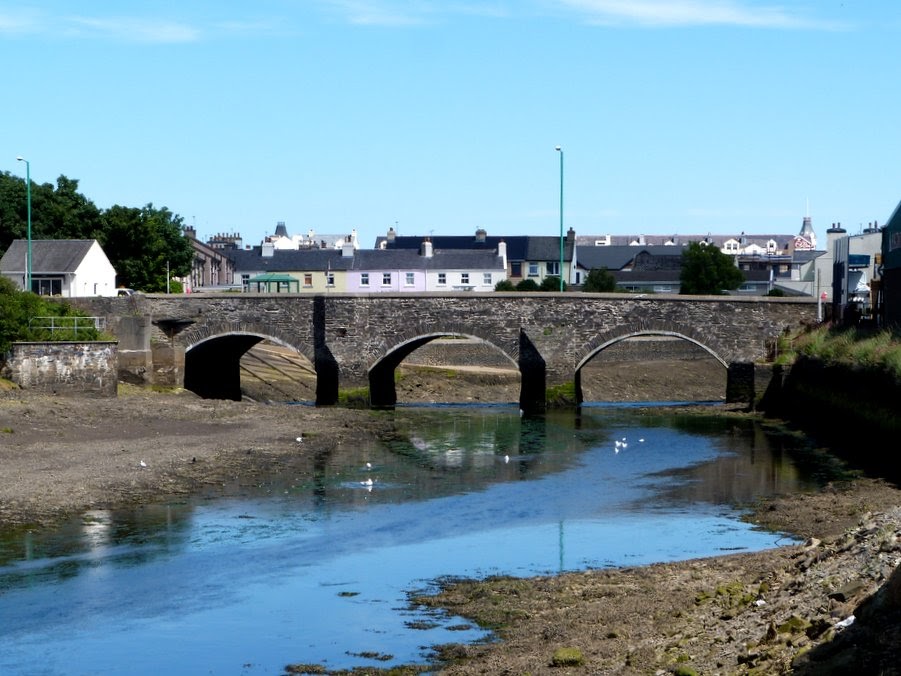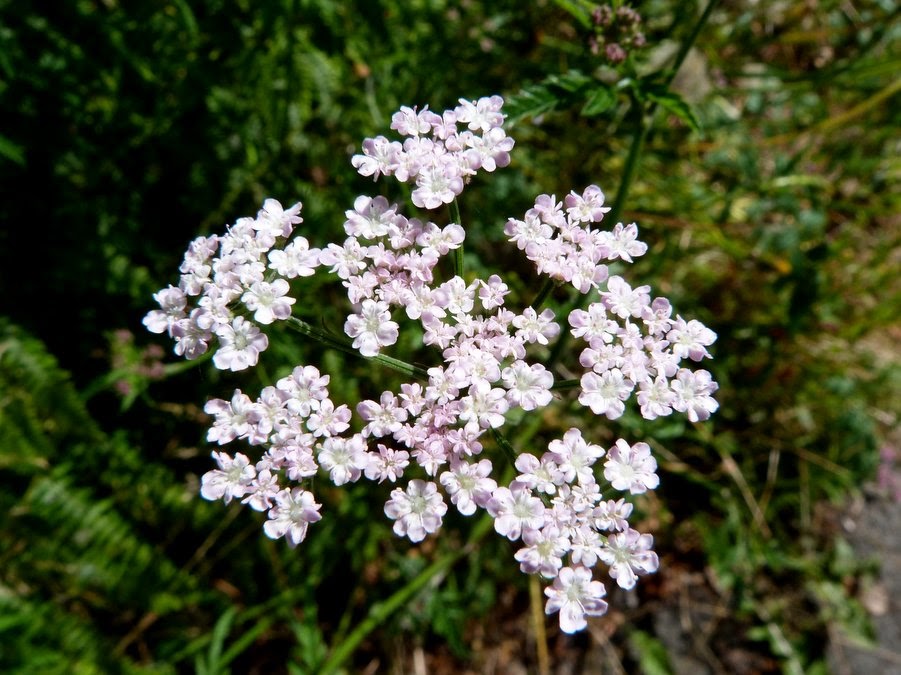Everything in the garden is lovely?
Sunday 24th July 2016
Nearly two weeks ago, I optimistically dated my working notes for this post - Mon 11 to Sun 17 July and chose the title Everything in the garden is lovely.
I had considered using that sentence as a title the previous week but decided against it because it simply isn’t true when applied to our garden. But my philosophy, if I have one, is that everything doesn’t have to be lovely - a few lovely things amongst the mess and chaos are enough to lift the spirits. Anyway, the pursuit of perfection isn’t always worth the effort and can be disappointing. There is a garden further down the glen which always looks like an illustration in a gardening magazine. I should be envious but it doesn’t appeal to me because I feel that it lacks “soul”. Maybe I am just rationalising and would love an immaculate garden. But it does seem more sensible to be happy with one’s lot rather than to chase after rainbows.
The date was also a case of over-optimism because it is already the 24th so I have missed yet another deadline. And I am likely to get even less efficient for the rest of the summer because I always get in a panic when we are expecting visitors - even the most welcome ones.
I haven't done anything very interesting in the garden during the past two weeks. I spent five days trimming the Leylandii hedge and mowed the grass twice. Neither activity can be described as interesting or loaded with laughs. When I write that “I spent five days . . .” I mean that I spent about two hours a day on five consecutive days as I will explain in the next paragraph.
Week 1 (11 to 17 July)
There is something very unlovely in the garden in midsummer - harvest mites. I noticed the first harvest mite bites on Tuesday the 12th. Harvest mites are an almost invisible member of the tick family and get onto my clothes from the vegetation in the garden. There was an old wives tale about them burrowing under the skin because they are impossible to see without the aid of a magnifying glass. The bites are really itchy and the itch can last for a few days. The only way to cut down on bites is to come in after a couple of hours in the garden, bath or shower, and change into fresh clothes. So I end up spending almost as much time doing laundry as gardening. I do have a cream which helps with the bites. I put on a dab and cover it with micropore tape which stops my clothes rubbing against the bite and aggravating the itch.
One side effect of the harvest mites is that I have been taking fewer photographs because I keep forgetting to take my camera out. The only windows of opportunity are immediately before or after gardening - and after gardening is usually devoted to picking raspberries which are ripening fast in the hot weather. It doesn’t seem worth while risking mite bites by wandering around the garden with my camera at random times.
On a very slightly more cheerful note, I planted some rose and lavender cuttings on Tuesday but don’t feel very optimistic about them. They are in pots in the conservatory which gets very hot on sunny days. It probably isn’t the best time of year to take cuttings.
I have been watching for butterflies in the garden, hoping to identify Tim’s “too orange to be a speckled wood” butterfly that he spotted down by the gate last week. While I was mowing on Wednesday I thought I had solved the mystery when I saw a female meadow brown up near the steps by the hawthorns. I didn’t have a camera handy but I went up to take some photos on Thursday morning when I spotted something fluttering around above the meadowsweet on the wild flower bank - another meadow brown. It wasn’t very cooperative but I got a shot of part of the underwing before it flew away over the summerhouse.
Then the same butterfly, or a similar one, returned and I got a better photo of the upper side of the wings after it settled on a red clover flower.
When I showed Tim the photos he said that the butterfly that he saw was far more orange. So we looked at some butterfly images on the computer. He couldn’t rule out the wall brown or the dark green fritillary but he thought the most likely candidates were the comma and the small tortoiseshell.
On Thursday afternoon we walked down to town to post a birthday card and return some tablets to the pharmacy. The pharmacist had given us enough for one a day when only one a week had been prescribed. They didn’t want to take the surplus back so now we have enough folic acid for the next two years.
It was a lovely sunny summer afternoon - warm in the sun and cool in the shade with just a gentle breeze - perfect for butterflies. But we only saw two or three meadow browns on the way down the glen road and one small tortoiseshell in the park. It was fanning its wings. It appeared to be in pristine condition so it may have been newly emerged and drying its wings.
We are not the only ones to notice how few butterflies are flying this summer. The next morning there was an article by Patrick Barkham in the Guardian which started - “A deadly combination of a sunless summer, cool spring and mild winter may make 2016 the worst year for butterflies since records began, experts warn.” Here is a link to the article https://www.theguardian.com/environment/2016/jul/15/2016-could-be-worst-year-on-record-for-british-butterflies-experts-warn
We walked through Poyll Dooey on the way to the pharmacy. The tide was very low as you can see from this photo of the old stone bridge over the Sulby. The road crossing this bridge is the main route from Ramsey to the north of the Island.
On Friday we did our short top of the glen walk to check on the river bank stabilisation. All the anxiety about road closures was unnecessary. This is the only warning sign before our group of houses.
The damage to the river bank near the Wildwood House bridge was being repaired using the same method as the Fern Glen repair which I described in the last post, and which has now been completed. Here is the final photo from Fern Glen.
On Saturday we walked down to the Whitebridge. When we crossed our bridge over the Auldyn River we stopped to watch a mob of ducks in the river. They were moving slowly downstream and were all mallards apart from one duck which looked similar to the male mallards but had blotchy white patches on its wings. We hadn’t seen a duck like that before, it may have been a hybrid. It wanted to stay with the group but other ducks didn’t like it and one tried to peck it when it got too close. I didn’t know that ducks had racist tendencies. I should have taken a photograph but I was too busy watching them.
I stopped a couple of times on the way down the road to photograph some wildflowers/weeds. First hogweed.
The hogweed has pretty flowers but it also has unpleasantly hairy stems and leaves and tough roots so I have adopted an “off with their heads” policy in the garden - in places where it is too hard to dig them out. I used to wait and cut off the seed heads after the flowers had faded but always tended to miss a few or leave it too late so now I am cutting them down as soon as I see the flowers.
This is a far more delicate umbellifer which I think may be Upright hedge parsley Torilis japonica. It looks very much like the cow parsley/Queen Anne’s Lace Anthriscus sylvestris - but that is usually pure white, flowered earlier, and has already died back.
Near the Sulby River we noticed a couple of white butterflies spiralling. I had also seen the same behaviour displayed recently by meadow browns in back garden. I am not sure whether it is flirtatious or aggressive behaviour. Eventually one settled and I got a photo but the edges of his wings were shredded and he was too battle-scarred to identify.
On the way back we looked for seedpods on the perennial sweetpea plant near the bridge but couldn’t find any.
I stopped on the glen road near Milntown to photograph the stonecrop growing on the wall between the road and the river.
I had always assumed that it was English Stonecrop Sedum anglicum but when I checked my wildflower book I discovered that it is White Stonecrop Sedum album. It is so easy to misidentify wild flowers. I hate to think that I may be spreading misinformation in this blog but at least my mistakes are genuine mistakes unlike so many forwarded messages and “tweets” which are full of “facts” and opinions that are at best carefully selected factoids* and at worst deliberate lies.
*definition of “factoid” - an assumption or speculation that is reported and repeated so often that it becomes accepted as fact.
On Saturday I started trimming the Leylandii hedge. It is an unnecessary hedge but we keep it because it screens the leafmould bin at the bottom of the garden. I also picked some rosemary to experiment with rooting cuttings in water as advised by a blog called “Grow a Good Life”. I have always planted rosemary cuttings in the ground before but it is interesting to try new methods.
Sunday was hot. Before I did my session of hedge trimming, I took some photos of a Blackbird “anting” on an ant nest in the back lawn.
Then I saw the first baby goldfinches of the year. They were begging for food in the tree above the bird feeders but I couldn’t get a photo because the camera wanted to focus on the foliage.
Week 2 (18 to 24 July)
Monday was even hotter and Tuesday was the hottest day of the year and was followed by thunderstorms during the night. The power went off early on Wednesday morning but Tim discovered that the trip switch had tripped and managed to restore the power which was a huge relief. I was saved from another fridge drama.
On Wednesday morning I was writing an email to a friend in Tasmania when we heard a bird crash into the living room window. It was such a loud impact that we thought it must be a fairly large bird like a young blackbird but when we looked out of the window we saw a tiny female or juvenile siskin - flat on its back on the steps. I went out to retrieve the body and was amazed to find that it was still alive. I brought it inside to keep it warm even though I wasn't too confident about its chances. It seemed to be weak on one side but it kept on breathing and could move its head.
After holding it for a while I tried putting it outside but it just crouched there looking stunned. So I brought it back inside and asked Tim to hold it while I got some bottles of hot water to keep it warm.
After spending about half an hour sitting on the hot water bottles, it seemed much stronger and I put it up in the old mesh bowl on the bird feeder. It perched on the edge for a few minutes, ignoring the food in the bowl, and then flew away across the back garden.
In the afternoon I finally finished the Leylandii hedge.
On Thursday I did two sessions of gardening. First I mowed the grass and then I trimmed the edges of about half the back lawn.
I saw the baby goldfinches again and managed to get some photos of one but they were either slightly out of focus or the bird was partly hidden.
Then I had a change of routine on Friday. Instead of working in the garden I replaced the toilet seat in the bathroom. The main problem was removing the old one because the bolts were rusty and it was hard to get at the nuts with the spanner because there was so little space between the toilet bowl and the wall. I removed one nut and managed to loosen the other before Tim came to help. It took him some time but was just as well that he helped because I would probably still be battling if I had tried to finish the job on my own. Fitting the new seat couldn’t have been easier.
Yesterday I cleared up some old dead twiggy bits that blew off the beech trees last winter and had been left under the shrubs and a pile of old Leylandii prunings from last year. I wanted to accumulate a full load of garden refuse to take out to the tip next week.
Then I took some photos of the best bits of the back garden.
The crocosmia providing its usual bright splash of colour.
The meadowsweet on the wildflower bank
And the hypericum which has been enjoying the hot weather.
The foxgloves are nearly over and are reaching that stage where I dither about cutting them back. I don’t like to remove the last flowers while they are still being visited by the bumblebees but if I leave it too late I will have an epidemic of seedlings next year because the seed cases at the bottom of the stem are ready to drop seed while the last flowers at the top of the stem are still opening.
And finally, the young goldfinches returned. I saw at least four of them. First I got this photo of an older juvenile which was already feeding itself and being cheeky to the other birds on the niger feeder . . . typical teenager.
Then I got my favourite photo of the week. A younger juvenile not long out of the nest and still begging for food.




















No comments:
Post a Comment